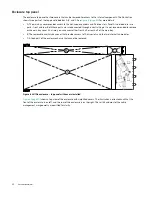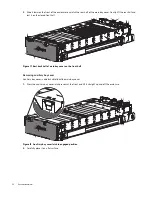
Introduction
9
About this guide
Introduction
This guide provides information about initial hardware installation and setup, as well as removal and installation of
customer-replaceable units (FRUs) for the Seagate Exos E 4U106 enclosure. The Exos E 4U106 is a high-capacity
expansion enclosure designed for use in cloud and enterprise environments. The Exos E 4U106 measures 4 Electronic
Industries Alliance (EIA) units of rack height (7") and fits a 1.2 m rack. It conforms to Common Form Factor (CFF) for
canister bay support, and it integrates with Seagate controller enclosures for storage management. The integral cable
management arm (CMA) allows the enclosure to be withdrawn from the rack for servicing, while remaining connected
and powered in this mode.
The Exos E 4U106 is designed for use as an expansion enclosure. This 4U106 enclosure can either be used as a
server-attached Just a Bunch of Disks (JBOD), or it can be cabled to an RBOD (RAID Bunch of Disks) as an Expanded
Bunch Of Disks (EBOD) for adding storage.
Intended audience
This guide is intended for system administrators and storage administrators.
Prerequisites
Prerequisites for using this product include knowledge of:
•
Server system administration
•
Linux and Microsoft Windows servers
•
Storage system configuration
•
Server-attached storage
•
Serial Attached SCSI (SAS) protocol
Document conventions and symbols
Table 1
Document conventions
Convention
Element
Green
text
Cross-reference links
Black, underlined text
Email addresses
Colored, underlined
text
Website addresses
Bold
text
•
Keys that are pressed
•
Text entered into a GUI element, such as a text box
•
GUI elements that are clicked or selected, such as menu and list items,
buttons, and check boxes
Italic
text
Text emphasis
Monospace
text
•
File and directory names
•
System output
•
Code
•
Commands, their arguments, and argument values
Monospace,
italic
text
•
Code variables
•
Command parameters
Monospace,
bold
text
Emphasis of file and directory names, system output, code, and text entered at
the command line










































